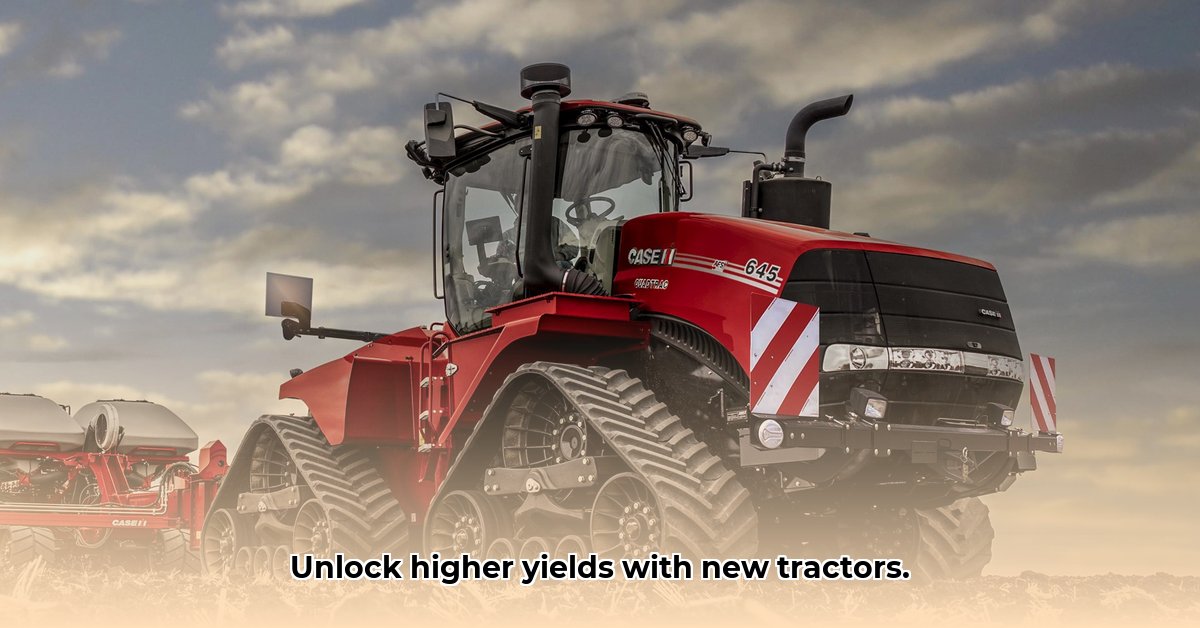
Choosing the right tractor is a pivotal decision for any farmer, impacting both profitability and environmental responsibility. Case IH offers a diverse range of models, but selecting the most sustainable and efficient option requires careful consideration. This article explores the Case IH lineup, analyzes available sustainability data, and provides actionable recommendations for farmers and policymakers. Learn more about financing options at tractor financing.
Case IH Tractor Lineup: Finding the Right Fit
Case IH caters to diverse farming needs with its various tractor series:
- Farmall A Series: Entry-level models ideal for smaller farms or simpler operations, emphasizing affordability and ease of use.
- Farmall 100 Series: Offers increased power and features compared to the A Series, suitable for farms requiring greater capacity.
- Farmall C Series: Provides a balance between power and maneuverability, making it versatile for various tasks.
- N Series: High-horsepower tractors designed for large-scale operations demanding significant pulling power and extensive coverage.
- Compact Tractors: Best suited for smaller acreage, specialized tasks, and high-density planting, prioritizing maneuverability.
Selecting the appropriate series hinges on your specific operational requirements. Consider factors like acreage, crop types, terrain challenges, and desired level of automation. Do you prioritize raw power, fuel efficiency, or ease of use? Careful assessment is key.
Sustainability Assessment: Transparency and Data Gaps
Case IH highlights fuel efficiency as a key advantage of its tractors. While lower fuel consumption contributes to sustainability, a comprehensive assessment requires a broader perspective. Currently, comprehensive lifecycle assessments (LCAs) and detailed greenhouse gas (GHG) emission data for Case IH tractors are largely unavailable. This lack of transparency hinders a complete evaluation of their environmental impact.
While fuel efficiency is a crucial factor, it's only one piece of the sustainability puzzle. The environmental footprint of manufacturing, transportation, and end-of-life disposal significantly influences the overall ecological impact. More transparent data from Case IH is vital for informed purchasing decisions. Until more comprehensive information becomes available, definitively labeling any tractor as "sustainable" remains premature.
Actionable Recommendations for Farmers
Making an informed tractor purchase requires a multi-faceted approach:
Honest Self-Assessment: Begin by thoroughly evaluating your farm's specific needs. Consider acreage, crop types, terrain, and operational challenges. This assessment will guide your model selection.
Detailed Comparisons: Move beyond basic horsepower. Investigate fuel efficiency (where data is available), maintenance requirements, and compatibility with precision agriculture technologies.
Total Cost of Ownership: Look beyond the initial purchase price. Factor in long-term costs like fuel consumption, maintenance, and potential repairs. A higher upfront cost may translate to long-term savings through lower maintenance and fuel efficiency.
Embrace Technology: Explore the integration capabilities with GPS guidance systems and variable-rate application. These technologies enhance efficiency and minimize input waste, further contributing to sustainability.
Recommendations for Case IH and Policymakers
Case IH should prioritize data transparency. Publishing comprehensive LCAs and GHG emission data would empower farmers to make well-informed decisions aligned with sustainability goals. This transparency would bolster the industry's credibility and cater to the growing demand for eco-conscious agricultural practices.
Policymakers have a crucial role. Incentivizing sustainable farming practices through subsidies, tax breaks, or other incentives for farmers adopting fuel-efficient equipment and sustainable methods can accelerate the transition toward a greener agricultural sector. Collaboration between manufacturers, farmers, and policymakers is essential.
Conclusion: A Collective Effort for Sustainable Agriculture
While Case IH tractors offer efficiency improvements, a complete picture of their environmental impact is still evolving. The demand for sustainable agriculture necessitates enhanced transparency from manufacturers and informed decision-making by farmers. By demanding comprehensive data and embracing technological advancements like precision agriculture, we can work towards a more sustainable future for farming.